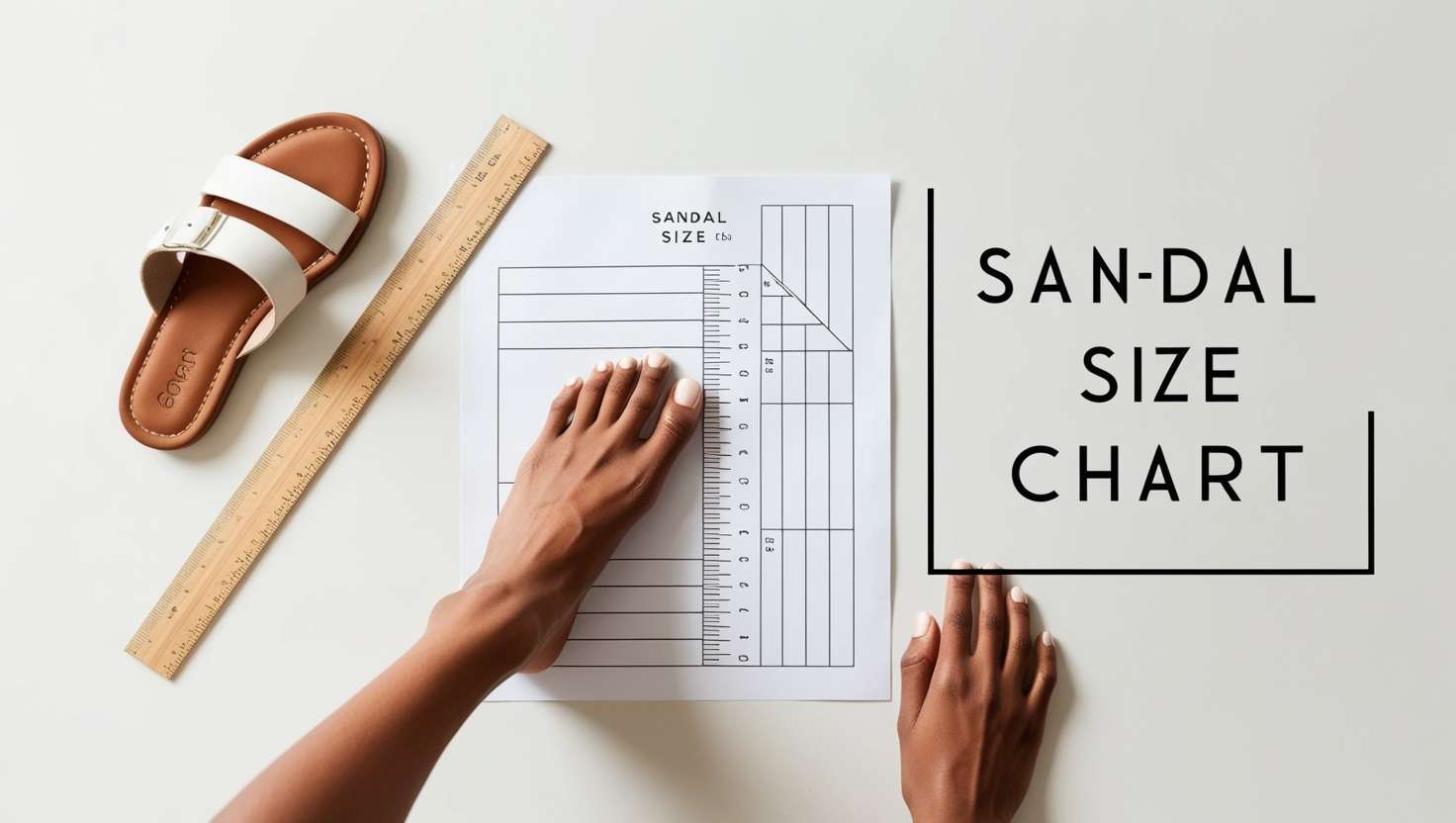
Shopping for sandals online is incredibly convenient—you get access to countless styles, colors, and brands right at your fingertips. However, one of the biggest challenges shoppers face is figuring out the right sandal size. Unlike trying shoes on in-store, online shopping requires you to rely on size charts and measurements. That’s why learning how to measure your feet correctly is essential for avoiding returns and ensuring a comfortable fit.
In this blog, we’ll break down everything you need to know about sandal size charts and guide you through a simple, step-by-step measurement process.
Wearing the wrong size sandals isn’t just uncomfortable—it can affect your posture and foot health. Tight sandals can cause blisters, calluses, and foot pain, while loose sandals can lead to slipping or tripping. Proper sizing ensures:
• Comfort: You can walk all day without discomfort.
• Support: Correctly fitted sandals help maintain good posture.
• Durability: Sandals last longer when they fit properly.
• Confidence: You feel good when your footwear looks and feels great.
Since sizing varies between brands, understanding your foot measurements is far more reliable than guessing your size based on previous purchases.
Before you grab a measuring tape, let’s take a closer look at sandal size charts.
Most size charts include conversions between US, UK, and EU sizes. For example, a US women’s size 8 might be equivalent to a UK size 6 or EU size 39. Familiarizing yourself with these conversions is helpful if you’re shopping from international brands.
Sandal size charts often list foot length in inches or centimeters. Some brands also include width options, like narrow, medium, or wide.
Sandal sizes can differ slightly between brands due to unique design styles and fits. That’s why checking each brand’s size chart before purchasing is crucial.
Measuring your feet at home is simple, and you only need a few basic tools:
• A sheet of paper larger than your foot
• A pencil or pen
• A ruler or measuring tape
• A flat surface to stand on
• A pair of socks (if you plan to wear socks with sandals)
Follow these easy steps to get accurate foot measurements for your next sandal purchase:
Place a sheet of paper on a flat, hard surface (like a tiled floor). Avoid carpeting, as it can cause uneven measurements.
Stand with your full weight on both feet. This matters because your feet tend to swell when you stand, and sandals should fit when your feet are at their largest.
Place one foot firmly on the paper and trace around it with a pencil. Keep the pencil upright to ensure an accurate outline. Repeat this step for your other foot because most people have one foot slightly larger than the other.
Using a ruler, measure the distance from the back of your heel to the tip of your longest toe (which might not always be your big toe). Write down this measurement in inches or centimeters.
Measure the widest part of your foot, typically across the ball of the foot. This will help you determine whether you need a narrow, medium, or wide sandal size.
Always use the measurements of your larger foot when selecting sandal sizes.
Match your foot length and width with the size chart provided by the brand. If you fall between sizes, it’s usually safer to size up, especially for open-toe sandals.
• Measure your feet in the evening: Feet tend to swell slightly throughout the day, so evening measurements provide a more accurate size.
• Wear the socks you plan to pair with your sandals (if any) while measuring.
• Measure your feet every 6–12 months: Foot size can change due to age, weight fluctuations, and other factors.
• Double-check measurements before buying: Accuracy helps avoid the hassle of returns.
Even with a size chart, many people make errors when measuring their feet or choosing sizes. Here are some common mistakes:
1. Guessing Your Size: Assuming your shoe size is the same across all brands can lead to poorly fitting sandals.
2. Ignoring Width: Choosing sandals without considering width can cause discomfort, especially if you have wide or narrow feet.
3. Not Measuring Both Feet: Most people have one foot slightly larger, and ignoring this can cause sizing issues.
4. Skipping Brand Charts: Always consult the specific brand’s size chart rather than relying on general size conversions.
Sandals should provide enough room for your toes and heel to rest comfortably on the sole without hanging off. Here’s a quick guide:
• Flat Sandals: Make sure there’s about ¼ inch of extra space around your foot for comfort.
• Strappy Sandals: Adjust straps so they are snug but not tight.
• Slides or Flip-Flops: Your foot should stay centered and not slide forward or backward excessively.
• Heeled Sandals: Look for styles with cushioned insoles to support your arch.
If you have particularly wide, narrow, or differently sized feet, consider brands that offer customizable sandal options. This ensures a perfect fit and is worth the investment if you wear sandals frequently.
Buying sandals online doesn’t have to be a guessing game. By understanding sandal size charts and learning how to measure your feet correctly, you can enjoy the convenience of online shopping while ensuring your footwear fits like a dream. Take the time to measure your feet, compare your results with each brand’s chart, and avoid common sizing mistakes.
With the right measurements and a little research, your next pair of sandals will feel just as good as they look—no returns required!
Ill-fitting shoes—whether too big or too small—can turn
READ FULLWhen the sun comes out, sandals quickly become our go-to footwear. T
READ FULLWhen it comes to footwear, comfort often takes a back seat to style.
READ FULL